At age 103, Saturday Evening Post illustrator McCauley “Mac” Conner has witnessed a lot of history.
An exhibition of his work was recently on display at the Delaware Art Museum, the Museum of the City of New York and the Norman Rockwell Museum in Stockbridge, Massachusetts. The exhibition, “Mac Conner: An Original Mad Man,” collects pictures from Conner’s long career.
The exhibition labels Conner a “Mad Man” to take advantage of the craze over the television series “Mad Men” about the creative marketing geniuses of Madison Avenue in the 1960s.
However, Conner was not really a Mad Man. A younger generation of artists and writers came along after Conner and were responsible for that revolution.
It’s unfortunate that the backers of the Conner exhibition felt they had to attach his name to a TV show to attract publicity. At the opening of the exhibition at the Museum of the City of New York, the museum’s director gave a talk in which she gestured to Conner and said, “Here’s a Mad Man, sitting right here, the original one!” But as Conner himself confessed in an interview with the Guardian, “I didn’t know what she was talking about then!”
The museum successfully drummed up publicity for the show as far away as England by leading viewers to believe they were seeing “the real Don Draper from Mad Men.” But it would have been more accurate, and it would have done a greater service to the history of illustration, if the museum had exposed audiences to one of the other vibrant periods where Conner had played a larger role.
Conner’s career actually began in the 1930s before some of the genuine Mad Men were even born. He painted his first cover for the Post in 1937, depicting a very different era than the young, hip world of advertising depicted in the TV show.
Here we see how Conner worked with a traditional realistic style, using humor that was popular in the 1930s but would seem dated by the ’60s when advertisers were trying to appeal to newly “liberated” women.
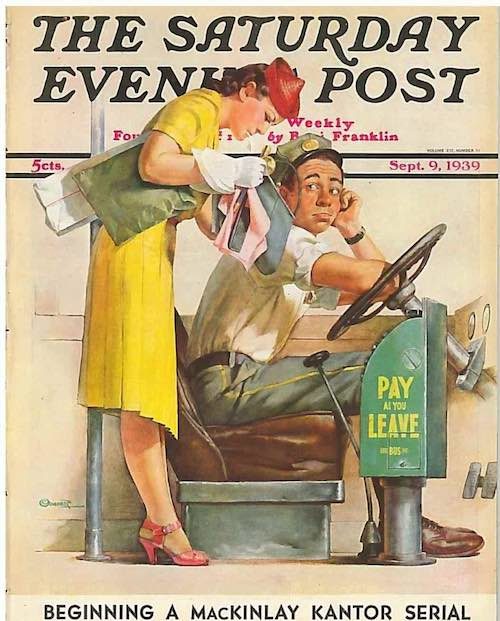
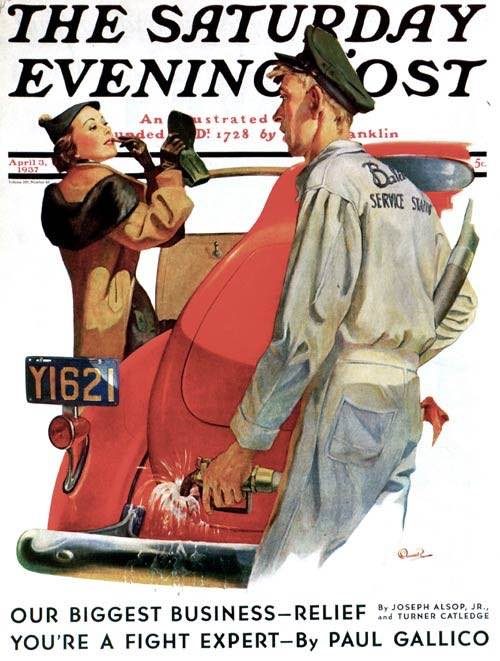
Looking back over Conner’s long career, we can see that he lived and worked through many different periods of American illustration that were every bit as influential and creative as the “Mad Men” era. They just haven’t had the good fortune to be selected for a TV series yet, so modern audiences aren’t as interested in them.
Conner was born in 1913, the era of the “Gibson Girl,” when illustrator Charles Dana Gibson (and a flock of imitators) set a nationwide standard for the ideal modern woman.
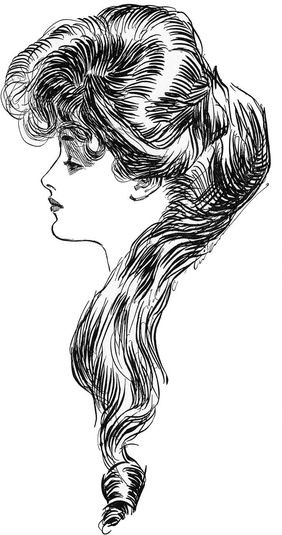
Gibson’s iconic woman had a huge influence on American popular attitudes. It gave a boost to the suffrage movement that resulted in the vote for women and shaped America’s taste for the first female movie stars at the beginning of the movie industry.
A few years later, when Conner was a boy, illustrators again set the tone, this time by creating the images for the Gatsby era and the Jazz Age with the hugely popular Arrow Collar Man invented by J.C. Leyendecker …
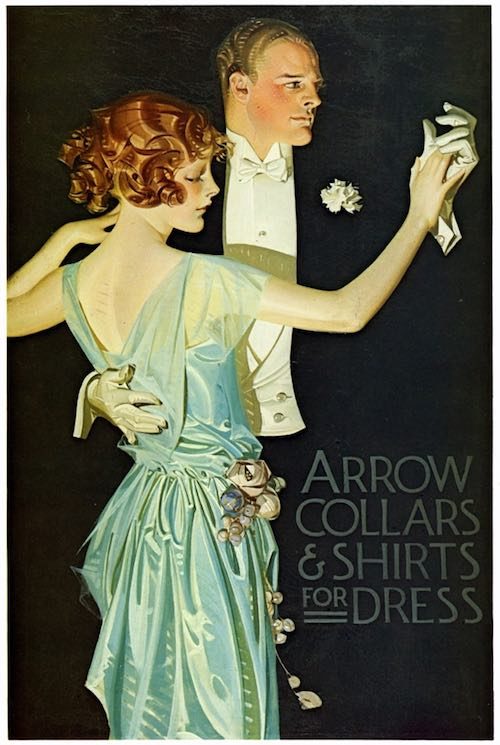
…and the “flapper,” invented by John Held Jr.
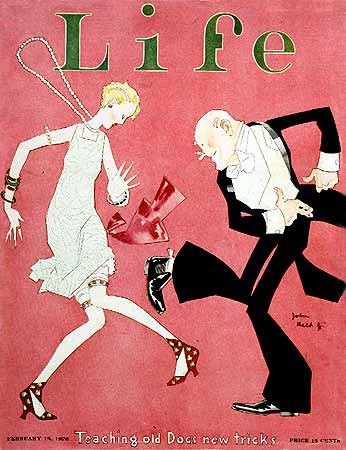
These icons had a tremendous influence on the clothing, hair styles, fashions, and popular culture of their day.
As Conner grew up in the 1920s, the streamlined look of Art Deco dominated American culture in magazines such as Vanity Fair.
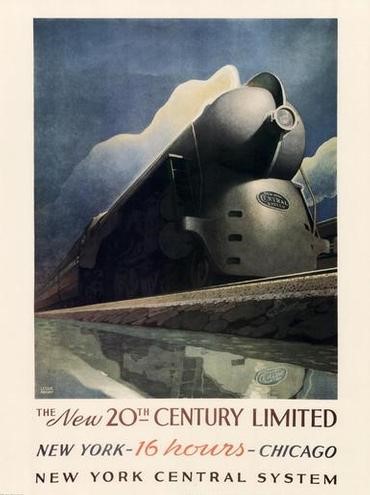 Illustrators such as Leslie Ragan helped shape the image of the Art Deco era. Ragan illustrated a series of train posters, such as this one from 1939.
Illustrators such as Leslie Ragan helped shape the image of the Art Deco era. Ragan illustrated a series of train posters, such as this one from 1939.
The Art Deco look influenced the style of cars, buildings, and furniture. You can see it in all those Fred Astaire and Ginger Rogers movies of the 1930s.
Conner began working as a professional illustrator in the 1930s and continued to work in the 1940s and 50s as tastes evolved through the Great Depression and World War II. Many illustrators adopted a “noir” look, a hardboiled, dark, shadowy genre which became very popular in illustration, detective movies and fiction:
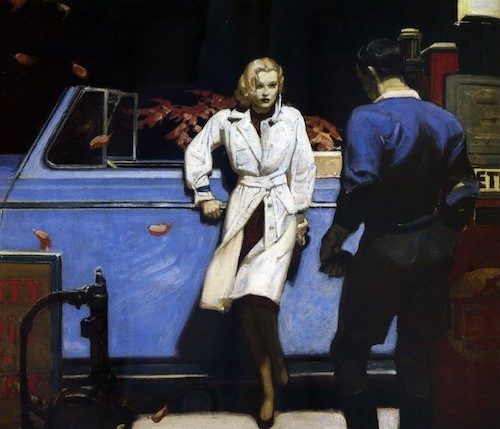
Conner sometimes worked in a version of this noir style, as seen in this example from 1954.
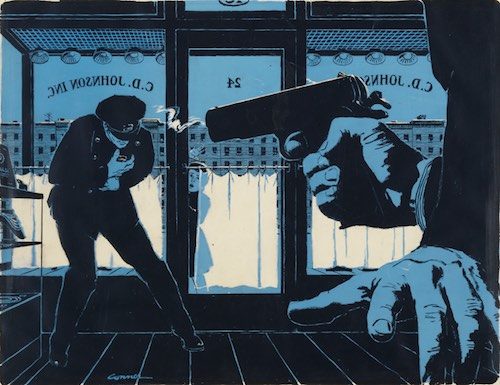
Styles and fads came and went during the post-war years, always with America’s illustrators leading the way in fashioning the visual taste of the era in magazines, advertisements, calendars, and posters.
In the late 1950s, waves of new consumer products sparked by post-war prosperity and the new popularity of television transformed public taste again. Conner updated his style to follow these trends.
The late 1950s paved the way for the Mad Men that were featured in the TV series. Fresh talent surged to the field of illustration in the 1960s. Illustrators and innovators at the prominent Cooper Studios and Push-pin Studios, and artists such as Bob Peak, Jack Potter, Bernie Fuchs and Peter Max worked with Madison Avenue to develop distinctive styles that fueled the “Mad Men” legend. Life was fast, advertising budgets were huge, and our culture was reinventing itself. Conner’s old fashioned style was very different from the ultra-cool look of the Mad Men era, as seen in this illustration by Bob Peak:
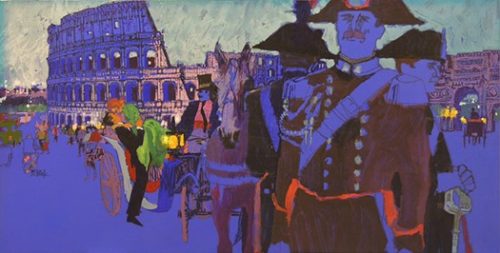
The true Mad Men deserve the credit for their accomplishment. While it is not accurate to advertise Conner as the original Mad Man, he did adjust his approach to work in the popular style of the 1960s.
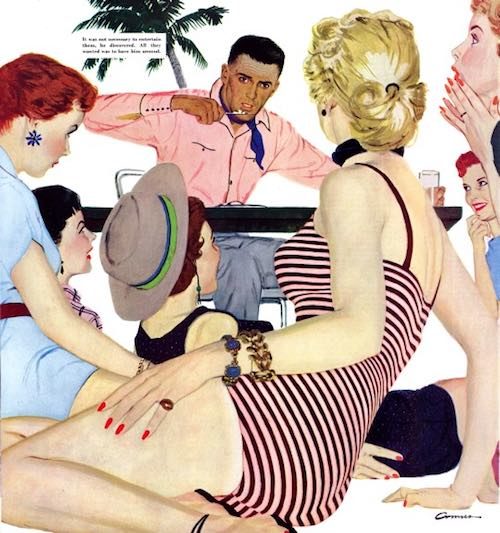
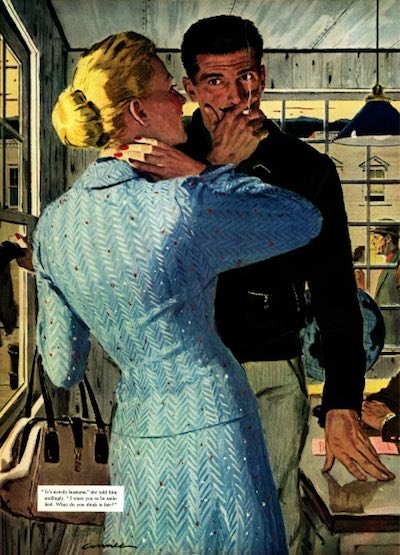
Looking back over Conner’s career, we can see that American illustration has been a long, noisy, colorful circus train of styles, techniques, and inventions. The Mad Men era was just one brief period of American creativity among many that would be equally fascinating for study.
Let’s hope that the success of the Mad Men television show will serve as a catalyst for reaching back to some of the other phases of American illustration in Conner’s lifetime, now frequently forgotten but just as bold and exciting and rewarding, awaiting the same rediscovery.
Become a Saturday Evening Post member and enjoy unlimited access. Subscribe now
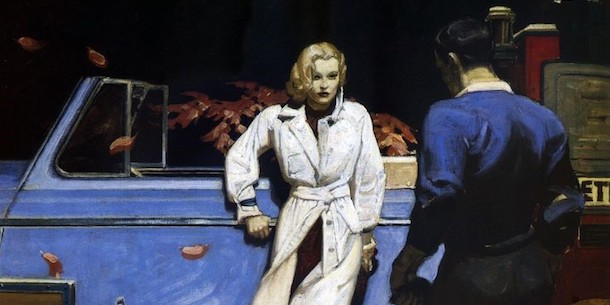
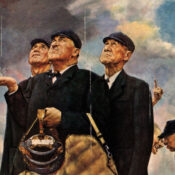


Comments
Thanks David! I erroneously thought Blendon Campbell HAD done covers for the Post the other day, when he had not. I really loved the ‘Butch the dog’ series of covers Albert Staehle did for the Post in the mid-late ’40s.
Most of them are comical about the misadventures of a semi-naughty Cocker Spaniel, but the 6/10/44 cover is kind of tear jerker. He’s very sad or worried, laying on his master’s uniform with a look that suggests Butch knows he may be deceased, or just away, misses him and wants to feel closer. Hopefully it’s the latter.
Just an idea for a future feature. The series stops in 1949, but had a good run. Around 1951-’56 Texaco had a wonderful series of beautiful print ads of the misadventures of some rambunctious Dalmation pups getting into, or running away from trouble also. It’s possible Butch inspired that series.
Bob McGowan, Jr.– Thanks for writing, I can tell you really know your illustrators! It’s reassuring to me that you’d never heard of Conner, because I’d never heard of him either before his well publicized traveling exhibition.
I agree with your taste; Bob Peak really set the field of illustration on fire, although he came along too late to work for the Post.
Your book on the Post covers (I have a copy too!) is a veritable “Who’s Who” of the great illustrators from the era. I hope to be writing soon about some favorites such as Mead Schaeffer and Austin Briggs, as well as some interior artists such as William A. Smith and Robert Fawcett. If you or other readers have any names you’d like to suggest, please send them in!
Was McCauley Connor a “Mad” Man? I’d have to say no, but only in the best sense of saying that, David. He’s 103, going on 104. This is a man that was blessed with good genetics and arguably a lot more common sense than what we witnessed on the booze infused, 3 packs (or more!) per day ‘Don Draper Show’!
This is really my first time learning of this artist, despite my having the ‘Covers of The Saturday Evening Post’ books. I had an old reading copy, but got a beautiful new one as a gift just last Christmas! There were so many gifted artists that did covers for the Post, but also story illustrations and ads.
The fact so many people think Rockwell did every Post cover is almost comparable to people thinking every issue of Life magazine was ‘LIFE’ and not ‘Life’ as well.
He was born at the right time to have had some really fantastic influences: Gibson, Leyendecker, noir, art deco and more. He also was influenced by cutting edge younger artists like Bob Peak. I LOVE Bob Peak, and bought ‘The Art of Bob Peak’ book 4 years ago, new, autographed by his son Tom Peak. $80 then, over $900 now on Amazon. Fantastic book.
While Bob Peak is more of an ‘acquired taste’ Conner should have a more mainstream appeal. He also has a Hitchcock flavor in a lot of his pieces, like the woman on the red staircase. Thanks so much for this feature.
Earlier this month the Post did a feature on Kodak ads they ran between 1901-1965. There’s a 1907 I noticed was by Blendon Campbell, another favorite artist. A future feature on him would be great!